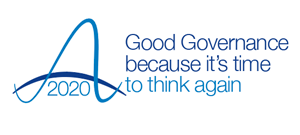Reducing health inequalities
14 July 2020

If there are any positives to the COVID-19 pandemic – and that is a big if – the renewed focus on health inequalities across the UK might be one of them.
People facing the greatest deprivation are experiencing a higher risk of exposure to COVID-19 and existing poor health puts them at risk of more severe outcomes if they contract the virus. This comes hard on the heels of 10 years of austerity and their impact on health inequalities, as set out by Professor Sir Michael Marmot in his report Health Equity in England: The Marmot Review 10 Years On (February 2020).
In a sense, the Marmot report tells us – again – what we already knew. The Black report in 1980 confirmed social class health inequalities in overall mortality and for most causes of death, and showed that health inequalities were widening.
In fact, they widened throughout most of the 1980s and 1990s but started to narrow in the period 2000 to 2010, demonstrating, just in case we were unsure, the importance of the relationship between economic growth, investment by government and health inequalities.
Helpfully though, Marmot updates the evidence and charts the corrosive effect of austerity, showing that, as a result of it:
- people can expect to spend more of their lives in poor health
- improvements to life expectancy have stalled – and actually declined for the poorest 10% of women
- the health gap between wealthy and deprived areas has grown wider
Marmot also says that place matters; living in a deprived area of the north east is worse for your health than living in a similarly deprived area in London, to the extent that life expectancy is nearly five years less.
Short-term gain, long-term pain
During the pandemic, we have seen that the measures taken by the government to control the spread of the virus and save lives now, including lockdown, social distancing and postponing routine care, are exacting a heavier social and economic price on those already living with inequality.
The consequences of these actions, and the economic recession that is almost certain to follow, risk exacerbating health inequalities now and in years to come. As we move from crisis management to recovery, government, businesses and wider society all have a role to play in giving everyone the opportunity to live a healthy life.
So, what is the role of the NHS?
Public health was transferred to local authorities as part of the ill-fated Lansley reforms of 2012 and the general consensus appears to be that this has worked well in many places but less so in others.
It also seems likely that Public Health England will come under close scrutiny for its part in managing the pandemic and might, fairly or otherwise, get some of the blame as the political debate becomes polarised, as inevitably it will.
Nonetheless, the NHS has a core role to play in addressing health inequalities in the way it provides services and supports an increased focus on prevention. Its role can – and should – go beyond the direct provision of care to create social value in local communities.
Shaping local communities
Throughout the country, the NHS is a significant, or even the largest, employer, purchaser and estate owner. As we highlighted in a previous bulletin, the decisions the NHS takes can therefore help shape a place, impact local socio-economic conditions and tackle the underlying drivers of poor health development.
CCGs, working with partners across their system, have a particular role to play to ensure that actions addressing health inequalities are front and centre of their plans post-COVID-19. Evaluating new models of service that emerged during the pandemic is an essential step for commissioners and systems to take to be clear that inequalities are not being amplified – by differential access to digital technologies, for instance. Without careful thought and good governance that enables boards to make evidence-based decisions, there is a risk of exacerbating pre-existing inequalities and creating new ones.
Questions for boards
With all of this in mind, here are some questions boards may wish to consider:
- Do we understand our local health inequalities and how they are being impacted by COVID-19?
- What assurance do we have that the new ways of working adopted in the pandemic have not exacerbated health inequalities?
- What is our role in reducing health inequalities and how do our current strategies contribute to achieving our aims?
- Is our local health and care system focused on reducing health inequalities and do system-wide plans sufficiently demonstrate an ambitious and achievable approach?
- What are the metrics we will use to understand if we are having the impact we want to have?
Not so long ago it was fashionable to talk of a commissioner-led NHS, based presumably on an assumption that this approach would lead to a greater focus on health improvement and reducing health inequalities.
But the NHS has moved on and now it’s clear that there is a pivotal role for commissioners and providers of all sorts to be working as part of a system that makes reducing health inequalities its priority.
We are keen to hear your views. If this briefing prompts any questions or comments, please call us on 07732 681120 or email us at advice@good-governance.org.uk
Darren Grayson
Executive Director
(Partner)

